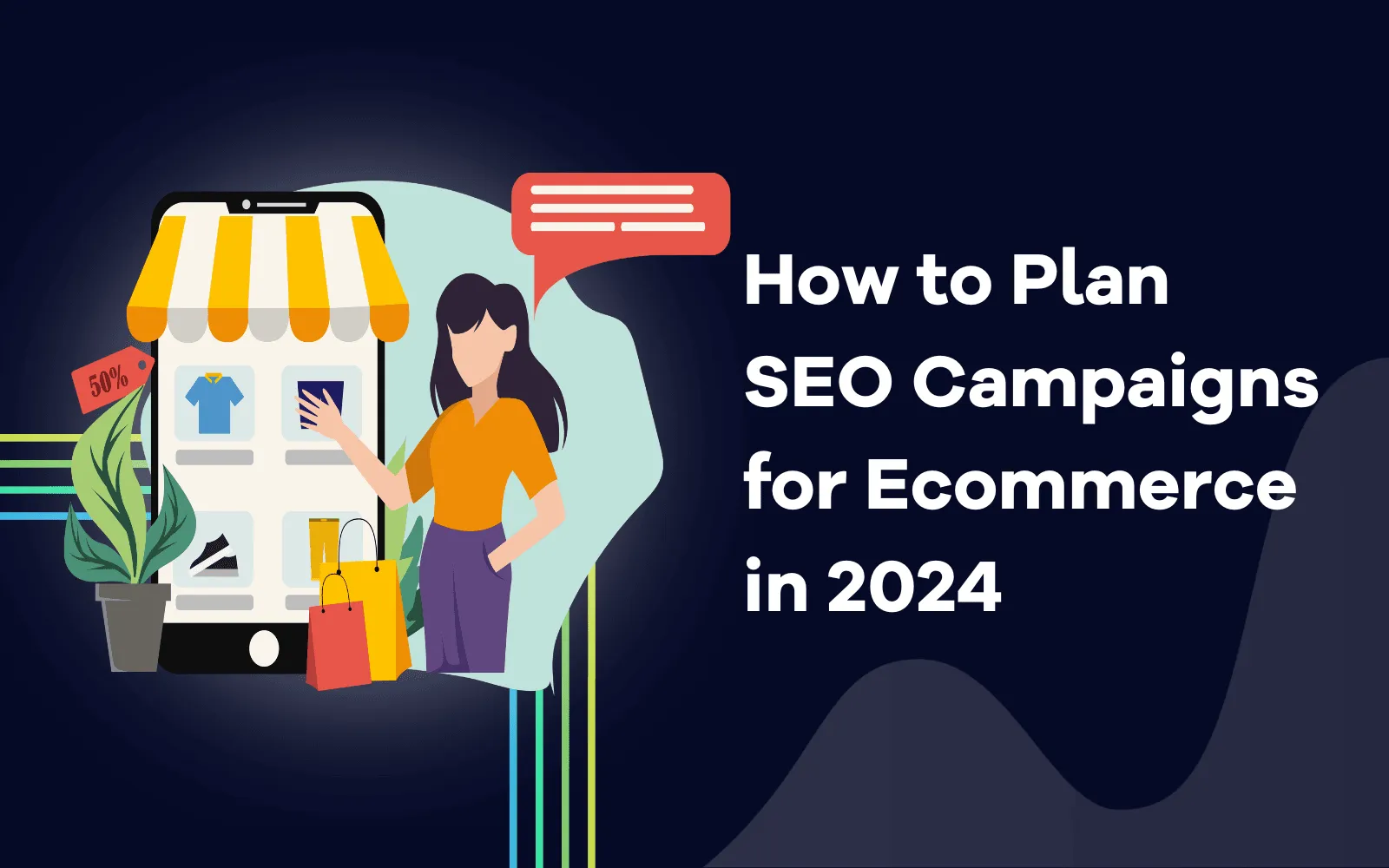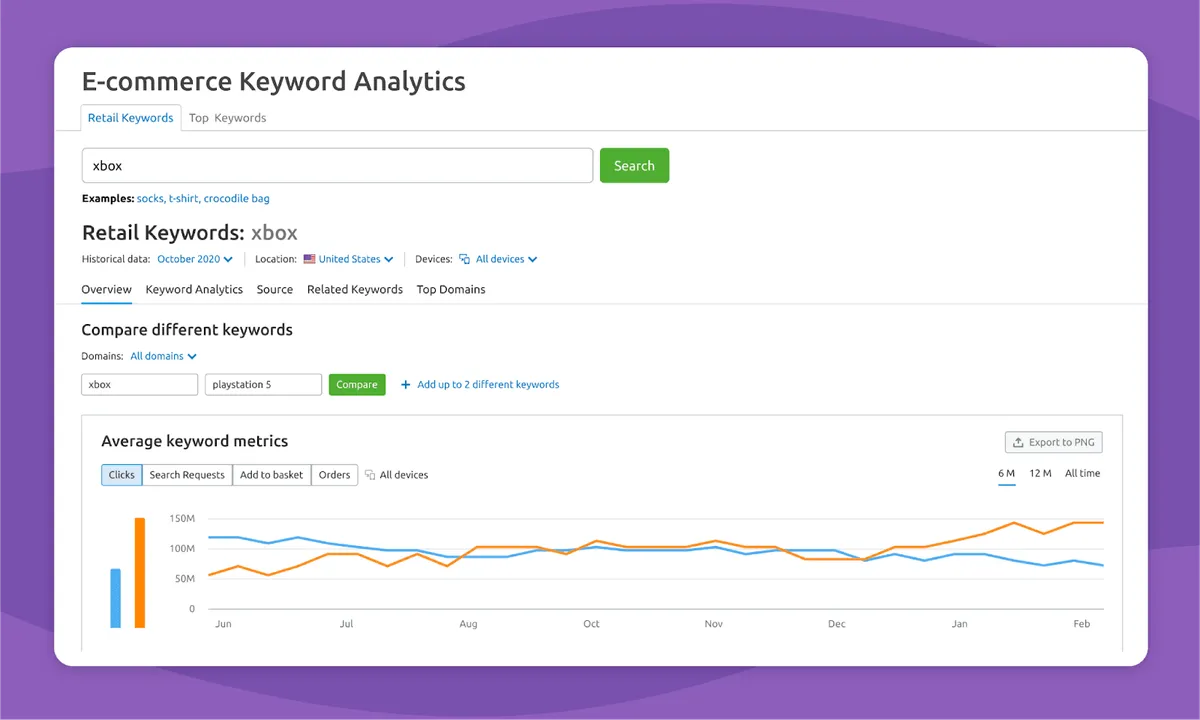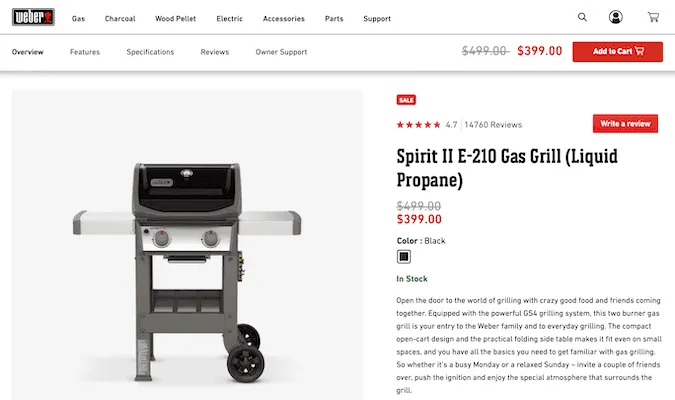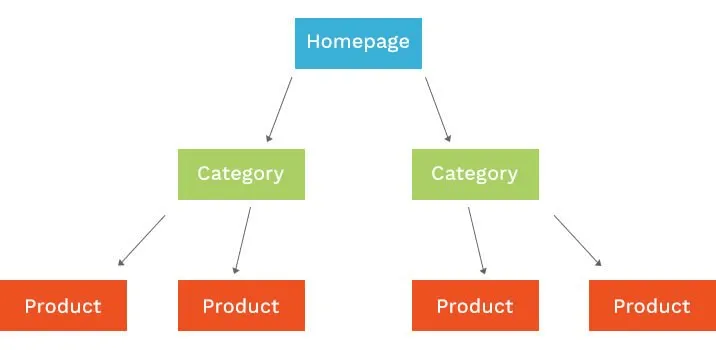
How to Plan SEO Campaigns for Ecommerce in 2024

Tim Robinson
February 20, 2024
Unlock success in 2024 with a comprehensive guide on planning SEO campaigns for your ecommerce business. Learn the latest strategies and techniques to boost your online visibility and drive more traffic and sales.

There are probably a million more eCommerce stores than there were a year ago.
And while not every store is selling the same product as you, it doesn’t change the reality of the industry's competitiveness.
Social media marketing can only do so much in eCommerce. You’re selling online in a time of constant search engine algorithm updates, expensive advertising, and thousands of products. And that’s what makes SEO campaigns for eCommerce a must.
If you thought eCommerce SEO was just an option before, think again. Organic search in eCommerce is all about strategy rather than a budget, and long-term customer loyalty over one-time buyers.
It is an activity you have to monitor to have consistent traffic and higher business revenue.
Why does eCommerce SEO matter in 2024?
How many times, as a buyer, have you checked out the second search result page of Google or any other search engine while searching for a product?
Let me guess, sometimes once? Rarely twice? But never thrice?
That’s how most buyers function. They want to buy something, and they want to be quick about it. Unless, of course, one is buying an investment-heavy product such as a TV or a Laptop for which they will conduct thorough research and even consider offline options.
But for most products, websites that don’t rank within the top 10 aren’t visited often. Even for the ones in the top ten, the first five get the most clicks than the bottom five. The first search engine result page gets 39.8% of all the search query clicks. And eCommerce SEO is the way you strive for that position. Phew. A lot of pressure, isn’t it?
Thankfully, you can rely on a set of processes for eCommerce SEO that help you achieve the online visibility you strive for.
Ecommerce SEO is the process of improving the online presence and site visibility of an online or a Shopify store in search engines and search engine result pages. These strategies can include creating keyword-oriented content, optimising product pages, blogging, and so on.
Strategies to plan SEO campaigns for eCommerce in 2024
Enhancing eCommerce keyword research
Keyword research isn’t just the stepping stone to eCommerce SEO but any SEO strategy in general. Keywords guide your SEO strategy. However, the strategy would differ from a traditional keyword research strategy for eCommerce. This is primarily because you don’t just target informational keywords but commercial ones too.
Choosing the right keyword
To know the keywords, you need to understand the user intent in search queries. “How-to,” and “listings,” are informational queries, whereas, product names, terms, and categories all fall into transactional queries. Look into what are the top informational, commercial, and navigational intent. You can look at the keyword results for competitors and build your strategy around related keywords.
Keyword research tools
It’s 2024. When it comes to keywords, you cannot play a guessing game anymore. Use keyword research tools. You can also check out Google’s and Amazon’s autocomplete predictions. Keyword research tools like Semrush make your job much easier by researching and analysing keywords. It also tells you the keyword volume, competitor keyword, rank position and other metrics that help you decide which keyword to use.

Source: Semrush
Monitor on-page SEO
On-page eCommerce SEO means refining your product pages to make it possible for search engines to find your pages. How can you do that? By optimising the following
Title Tag: Add the primary keyword in the H1 title tag of the page so it can reflect the page themes.
Image Optimisation: Ensure that the image quality is top-notch and you’ve added an alt-text description to optimise the image in image results on search engines.
Metadata: Meta description can help you improve your click-through rate. Add the necessary keywords and meet the minimum word requirement. Feel free to add promotional copies to give you a boost such as “free shipping” and “50% off”.
The URL: Include your primary/secondary keyword in your URL. It helps you stand out in competitive niches.
Product Description: Write unique and compelling copies that detail your product to capture interest and reduce on-page thin content on your profile. For example, if you’re selling shoes, you can talk about how it can add cushion to your feet, how easily you can get it on and off, and splash around in comfort. In the following example, the brand talks about togetherness and friendly gatherings to promote their Gas Grill.

Source: Crazyegg
Optimising website structure
As an eCommerce store, you’re going to have hundreds and thousands of product pages. But how these pages are structured and organised will impact your eCommerce SEO.

Source: AccuRanker
The website architecture gets complicated every time you add a new category and add/remove the product. If the structure is compromised because of the same, it results in a poor user experience and also negatively affects the SEO performance of your site.
Optimising your structure involves making your navigation easier, and employing the right keywords to create informative content and to help users understand your product. Remember that eCommerce product pages suffer from thin content.
To counter this issue, you can hide these pages from search engines or even add a blog below your product details. You can also add canonical tags that tell Google that a URL is a “master version”. Google then ignores duplicate content that dilutes your search engine ranking ability.
Work on technical SEO
Do a technical SEO audit to check if the search engines are easily able to discover your sites, the page speed is optimised and is optimised for mobile and so on.
The quicker your store can load, the higher the chances of it ranking high on the search engines. Fast web pages can provide a seamless user experience, something that every search engine prefers and looks for in a website to decide its search engine ranking.
It also results in better website engagement and more organic traffic because your site is easier to crawl. Some of the ways you can optimise your eCommerce SEO are:
Submitting your Sitemap to Google Search Console: Creating a sitemap eliminates indexing and crawling issues. A sitemap contains a list of all the site pages and informs Google which pages to crawl and index
HTTPS: Search engines are putting a lot of significance on website security to ensure users are shown reliable and secure results for their search intent. As an online store, you need to adapt to a secure version of HTTP that increases the odds of showing your site on search engines.
Ensure mobile optimisation and site speed: Most eCommerce buyers shop from their phones. You need to ensure that your site is equally well-responsive on mobile devices and that the mobile site loads fast. You can use tools like PageSpeed Insights or Chrome UX report to check the page speed. A responsive website and a mobile-friendly design help you deliver exceptional user experience to a diversity of screen sizes.
Focus on link-building strategies
Most brands often dismiss link-building strategies in eCommerce considering it gets confusing for many marketers on where to get the links from, how to get them, and what it means for internal linking. But link-building can give the same boost to eCommerce SEO as it does for other industries.
Google considers the number of backlinks, the quality of backlinks, and their relevance to trust a page’s credibility and trustworthiness. It also decides a page’s authority from the number of inbound and outbound links. Some ways you can build quality backlinks are:
Guest Posts: You can do blogger outreach, and write and publish articles on someone else’s website in the same niche as yours. In return, you earn backlinks and generate traffic from the written articles.
A guest post is a popular and legitimate way to reach a wider audience, improve search engine rankings, and establish your brand authority. For example, if you’re an online retailer selling women’s clothes, you can target fashion and beauty magazines and websites to contribute articles and get a backlink.
Review and product Directories: List your online store across multiple directories. Make sure to add consistent business information to get links from local citations and review platforms like Yelp.
Press Mentions: You can leverage sites like HARO or PRs sites where you can contribute to a piece of content and write press releases in exchange for a backlink.
Blogging isn’t going anywhere
With so many new avenues to market your eCommerce store and improve your eCommerce SEO, you’d think blogging takes a back seat. But that couldn’t be further from the truth. Ecommerce companies need to fill the educational gap the same way as their B2B counterparts. Besides, content marketing needs to be a dominant part of your marketing strategy.
For example, if you’re an online store that sells electronic appliances or even beauty products, you want to help potential customers by educating them about the product, solving their problems, guiding them on how to use the product, etc.
Blogs with necessary keywords and quality content are highly regarded by Google. Through blogging, you can target both long-tail and short-tail keywords. This helps you earn high-quality backlinks and bring more organic traffic to your website.
Wrapping Up
While the strategies for eCommerce SEO don’t widely differ from those in the past few years, you need to understand the changing market dynamics and customer expectations.
For example, the younger generation will have a different lingo in search queries than the millennials or boomers. Identifying user intent, crafting your content for today’s audience, and tweaking your strategy every year is the way to get your eCommerce SEO right for 2024.
Related blog posts
The Hidden Flaws in Search Volumes and How to Solve Them
Learn how AI Search Volume delivers reliable search volumes by combining GKP, GSC, and Trends so that you can prioritize the right keywords.
1 July 2025
AI Overviews Are Taking Over SERPs
From traffic drops to decreasing CTRs, AI Overviews are shaking up SEO. Learn what is happening and how AccuRanker helps you track AIO.
25 June 2025
How AccuRanker’s AI Models Fix Inaccurate SEO Data
Struggling with unreliable SEO data? Discover how AccuRanker’s CTR, Search Intent, Search Volume, and Share of Voice deliver accurate insights.
1 June 2025




